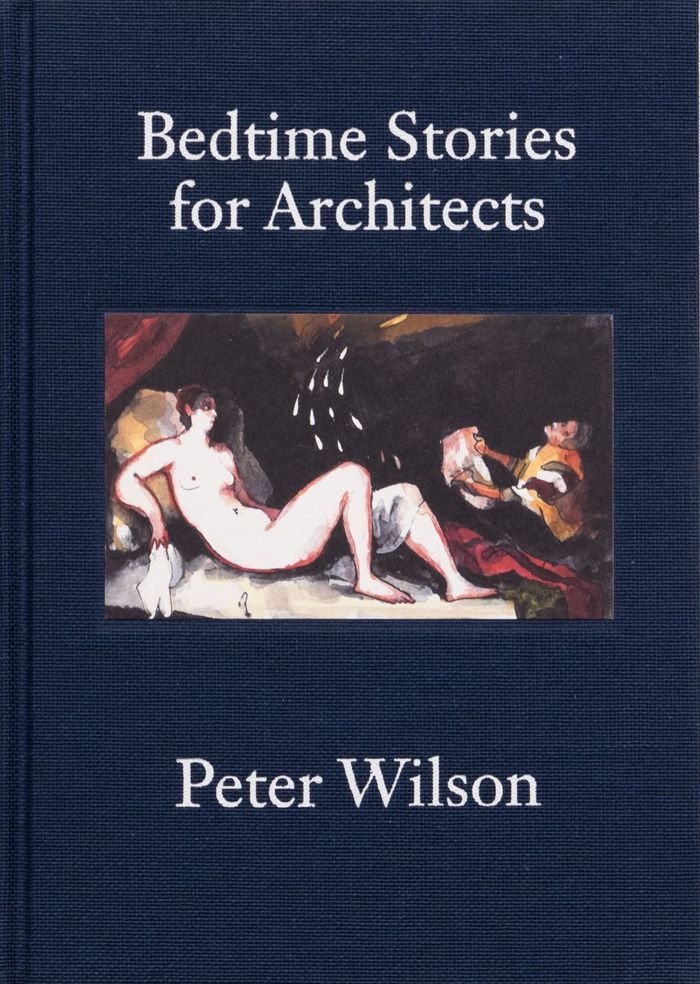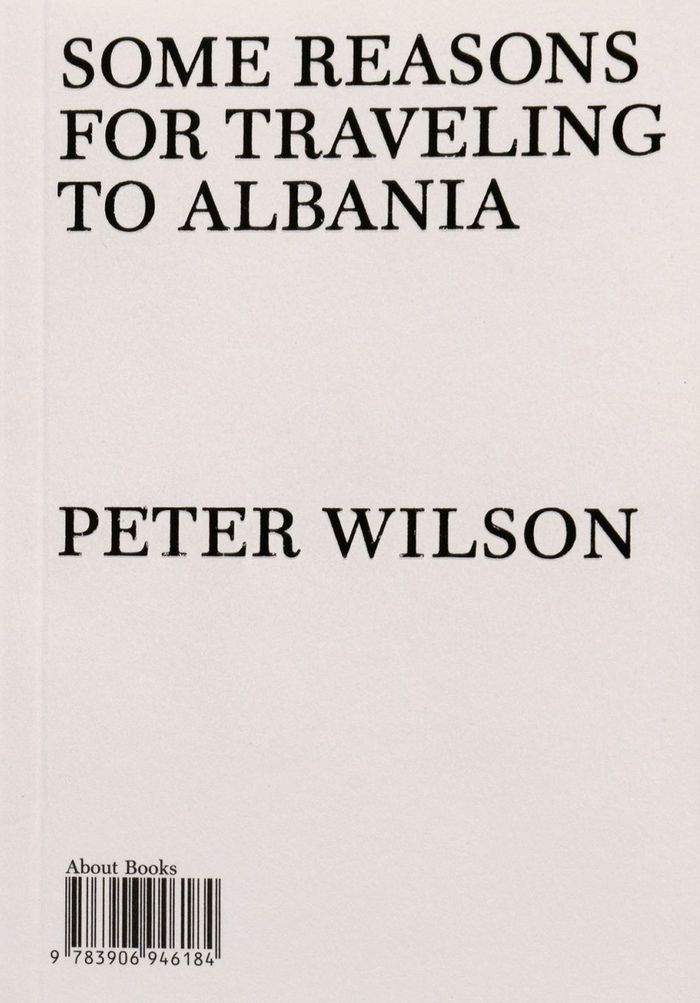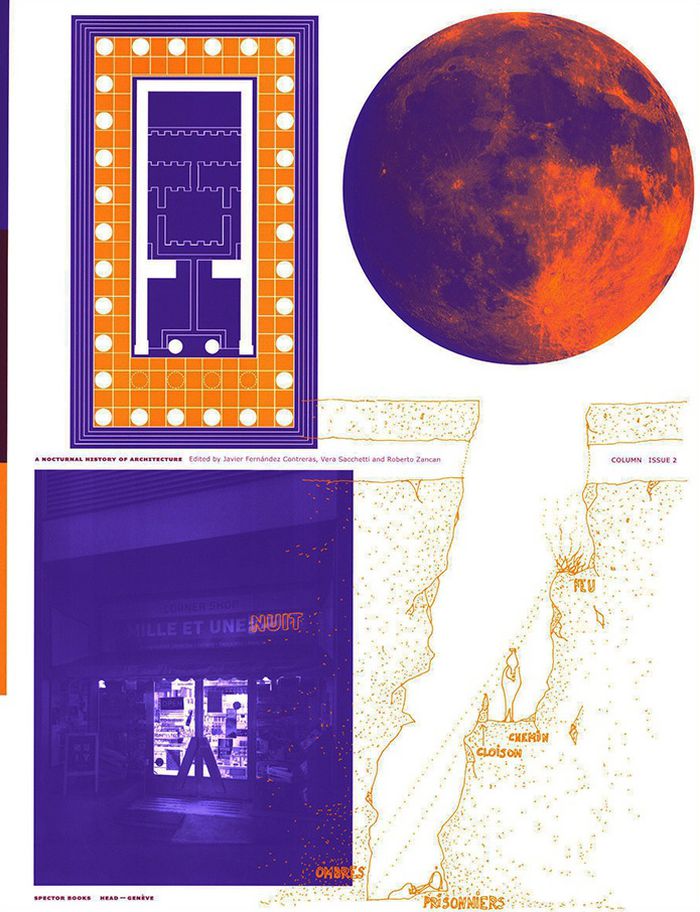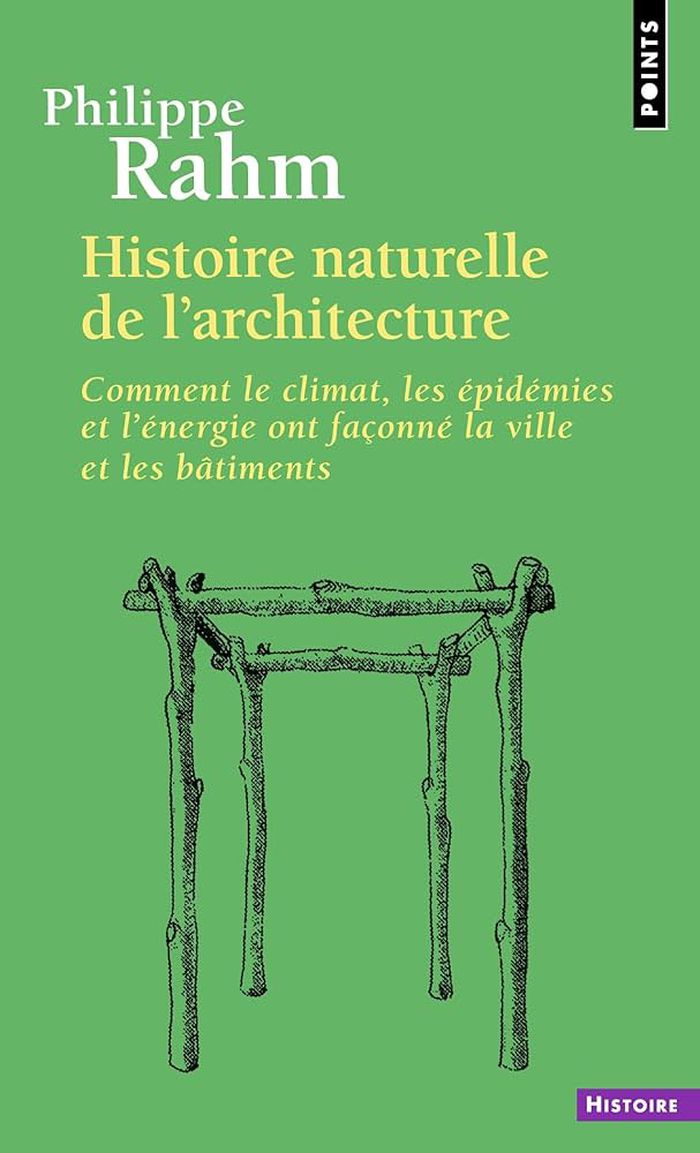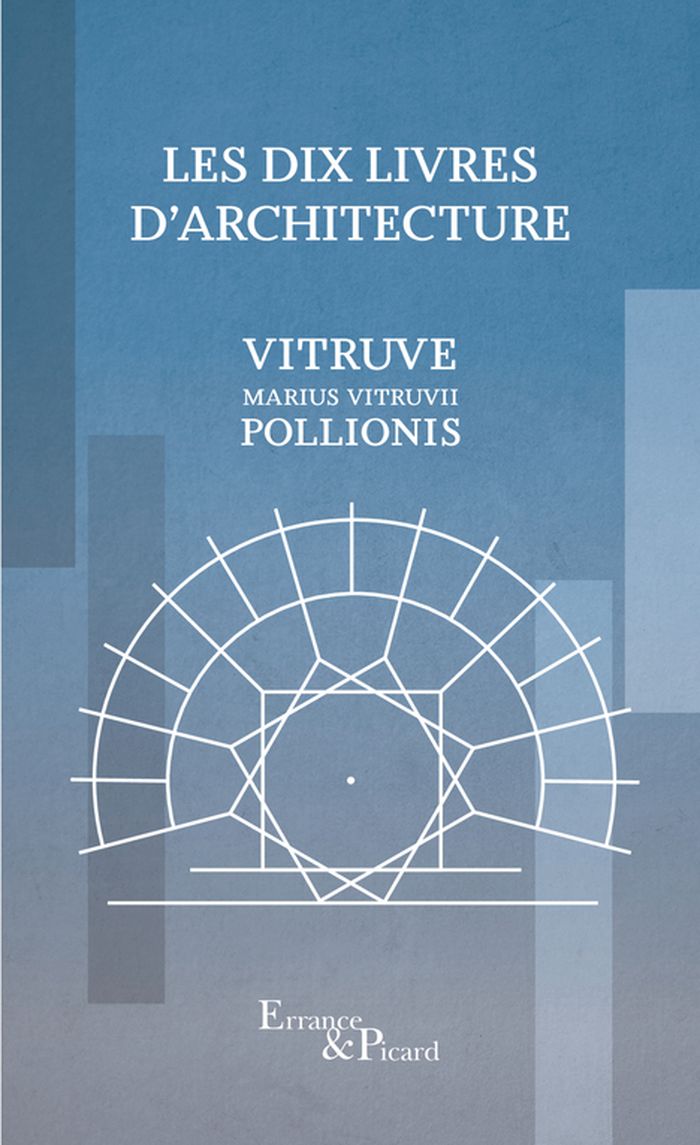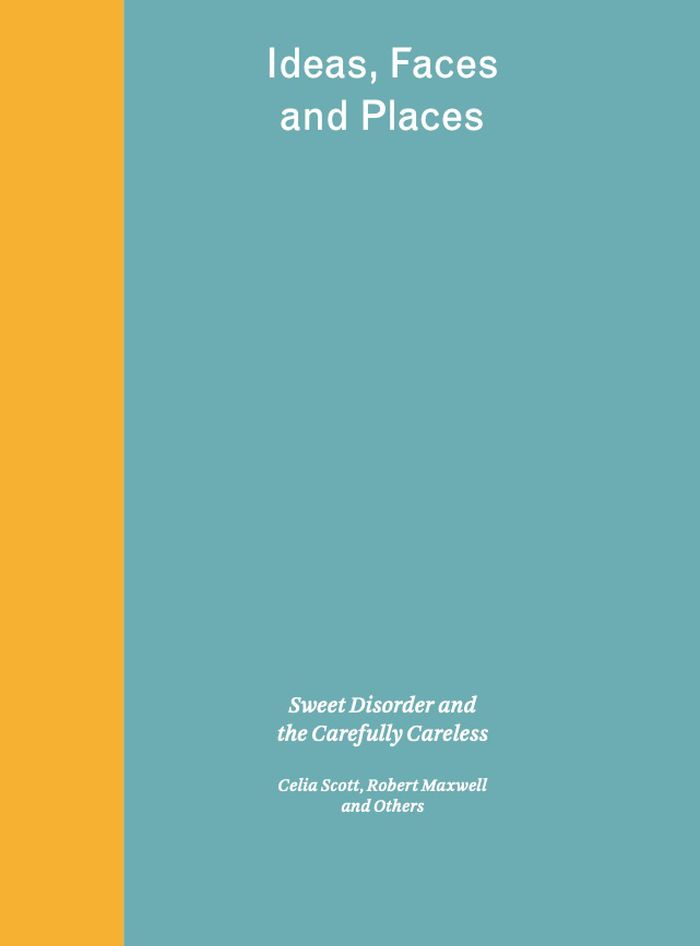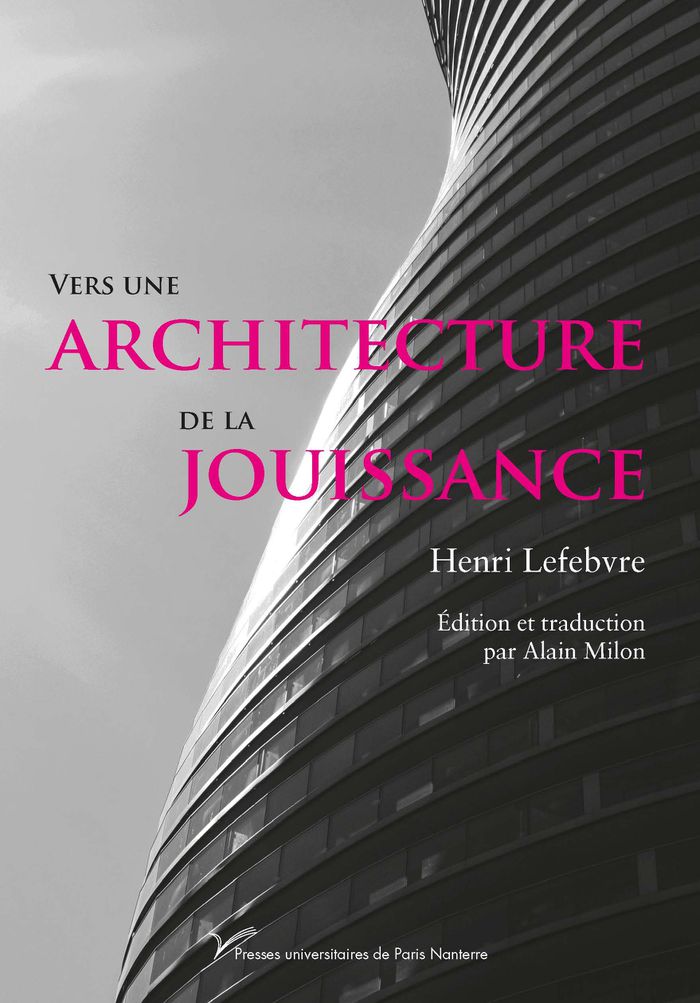$56.95
(available in store)
Summary:
''Bedtime stories for architects'' is a compendium of texts, built works and graphic work by Peter Wilson. It offers glimpses of buildings by the German based office of BOLLES+WILSON, but it is not a monograph, it presents a cloud of discursive subjects and narratives, evidencing Wilson’s take on a wide range of academic, technical, cultural, and architectural issues. It(...)
Bedtime stories for Architects
Actions:
Price:
$56.95
(available in store)
Summary:
''Bedtime stories for architects'' is a compendium of texts, built works and graphic work by Peter Wilson. It offers glimpses of buildings by the German based office of BOLLES+WILSON, but it is not a monograph, it presents a cloud of discursive subjects and narratives, evidencing Wilson’s take on a wide range of academic, technical, cultural, and architectural issues. It has been called ‘tremendously cutting-edge’, perhaps because of the wry humor of the stories and Wilson’s witty and intelligent drawings – these extend to satirical portraits of – bankers, estate agents, property developers and a few OK people. Much of the book is organized alphabetically like a children’s book – A is for Albania, C is for Counterfactual Histories, G is for Guggenheim, M is for Malevich, O is for Olgiati, R is for Ritual. Counterfactual Histories (a concept from Borges) are paint-shop illustrated as surprising, poetic and enigmatic landscapes. ‘A Blue Review’ deconstructs a book on colour in architecture. Between the enigmatic graphic works are longer texts including Wilson’s extensive analysis of Studio Mumbai (first published in El Croquis), a longer investigation of the Swiss architect Valerio Olgiati and a history of Modernism in Wilson’s home country Australia.
Architectural Theory
$54.00
(available to order)
Summary:
The 1912 recognition of Albania as an entity on the international horizon is paralleled by our own initial encounter with this Balkan enigma (some fifteen years after the collapse of Albanian Communism). In both cases there were pre-histories to be taken on board and post-histories to be orchestrated. These are the parallel subjects of this book. Bolles+Wilson were one(...)
Some reasons for traveling to Albania
Actions:
Price:
$54.00
(available to order)
Summary:
The 1912 recognition of Albania as an entity on the international horizon is paralleled by our own initial encounter with this Balkan enigma (some fifteen years after the collapse of Albanian Communism). In both cases there were pre-histories to be taken on board and post-histories to be orchestrated. These are the parallel subjects of this book. Bolles+Wilson were one of three architectural offices invited to the international competition for a Masterplan to re-script the central axis of Tirana. They designed two rooms within the Rationalist edifice, one the office of Deputy Prime Minister Nico Paleshi, and nearby a room called ‚''Prime Minister’s Think Tank''.
Architectural Theory
$50.00
(available to order)
Summary:
For centuries, architectural theory, discourse and agency have been based on diurnal and solar paradigms. References to night in Vitruvius’s De architectura are few, and the same absence is notable in Renaissance treatises by Alberti or Palladio. It was not until the 19th and 20th centuries that the invention and institutionalization of artificial light in private and(...)
July 2024
Nocturnal history of architecture. Column issue 2
Actions:
Price:
$50.00
(available to order)
Summary:
For centuries, architectural theory, discourse and agency have been based on diurnal and solar paradigms. References to night in Vitruvius’s De architectura are few, and the same absence is notable in Renaissance treatises by Alberti or Palladio. It was not until the 19th and 20th centuries that the invention and institutionalization of artificial light in private and public spaces gradually transformed conceptions of night in the architectural discipline. This volume offers the first attempt at a nocturnal history of architecture. What emerges from the studies is the thesis that the identity of human beings—across time and their domestic, professional and cultural spaces—is powerfully determined by the parameters of nighttime. By analyzing and studying "night scenes," this book reveals how the night is a laboratory for the development of new forms of conceptualizing space and, ultimately, of living.
$43.95
(available to order)
Summary:
Moyen d’accessibilité inéluctable au train, la marche est inhérente à la pratique de la gare. Cet espace-seuil entre la ville et le moyen de transport est donc censé la faciliter, voire la considérer comme mode de référence. Pourtant il n’en est rien et s’y joue encore quotidiennement pour les concepteurs, les gestionnaires, et pour les usagers les mêmes enjeux qu’au XIXe(...)
Le marcheur de la gare : Une architecture des corps
Actions:
Price:
$43.95
(available to order)
Summary:
Moyen d’accessibilité inéluctable au train, la marche est inhérente à la pratique de la gare. Cet espace-seuil entre la ville et le moyen de transport est donc censé la faciliter, voire la considérer comme mode de référence. Pourtant il n’en est rien et s’y joue encore quotidiennement pour les concepteurs, les gestionnaires, et pour les usagers les mêmes enjeux qu’au XIXe siècle : compter ses pas à travers la gare, guidés par la conception experte d’un parcours que l’on sait défini par un nombre incalculable de contraintes techniques, et les traduire en temps passé, en effort engagé, en expérience sensible dont il est attendu une certaine qualité. Le piéton en tant qu’individu n’est que très peu présent dans les réflexions sur les gares ferroviaires : on parle de marche en ville et de flux en gare, mais la question de la marche en gare demeure une réalité aussi plurielle qu’inexploitée. Cet ouvrage propose alors un pas de côté. Il s’attache à comprendre, au fil de l’Histoire, quels sont les enjeux de la marche pour les Compagnies Ferroviaires et quelles sont les réponses spatiales apportées par les concepteurs. À travers l’analyse d’un certain nombre de dispositifs spatiotemporels (salles d’attente, salle des pas perdus, signalétique, escalator, atriums, dispositifs de captation, nudge...), l’ouvrage montre que l’espace-gare que nous connaissons est un lieu de sédimentation des enjeux liés à l’individu en mouvement.
Architectural Theory
$24.95
(available in store)
Summary:
En quoi la nécessité pour l'être humain de maintenir la température du corps à 37 °C engendre-t-elle l'apparition de l'architecture ? Comment un simple grenier à blé devient-il la ville ? Pourquoi l'iode a-t-il provoqué l'urbanisation du littoral ?. Dans cet ouvrage, l'architecte Philippe Rahm met en lumière les causes physiques, biologiques, climatiques ou sanitaires qui(...)
Histoire naturelle de l'architecture : Comment le climat, les épidémies et l'énergie ont façonné la ville et les bâtiments
Actions:
Price:
$24.95
(available in store)
Summary:
En quoi la nécessité pour l'être humain de maintenir la température du corps à 37 °C engendre-t-elle l'apparition de l'architecture ? Comment un simple grenier à blé devient-il la ville ? Pourquoi l'iode a-t-il provoqué l'urbanisation du littoral ?. Dans cet ouvrage, l'architecte Philippe Rahm met en lumière les causes physiques, biologiques, climatiques ou sanitaires qui ont influencé l'histoire architecturale et provoqué le surgissement de ses diverses formes, de la préhistoire à nos jours. Relire l'histoire de l'architecture à partir de ces données naturelles longtemps ignorées par l'historiographie du XXe siècle permet d'affronter les défis environnementaux majeurs de notre siècle et de mieux construire dorénavant face à l'urgence climatique.
Architectural Theory
De l'eau jusqu'au nombril
$14.95
(available in store)
Summary:
De 1973 à 1978, le groupe d’architectes, artistes et designers Ant Farm, composé d’une dizaine de membres, a travaillé à la conception d’une plateforme marine destinée à communiquer avec les dauphins. Il ne s’agissait pas seulement de les observer mais bien de parler et d’échanger des informations avec les cétacés. Cette structure flottante, la Dolphin Embassy, concentre(...)
De l'eau jusqu'au nombril
Actions:
Price:
$14.95
(available in store)
Summary:
De 1973 à 1978, le groupe d’architectes, artistes et designers Ant Farm, composé d’une dizaine de membres, a travaillé à la conception d’une plateforme marine destinée à communiquer avec les dauphins. Il ne s’agissait pas seulement de les observer mais bien de parler et d’échanger des informations avec les cétacés. Cette structure flottante, la Dolphin Embassy, concentre bon nombre des réflexions qui ont animées les mouvements radicaux et contre-culturels de l’époque : l’ouverture à la nature et aux espèces non humaines, la constitution de communautés élargies, la recherche de nouveaux espaces perceptifs et communicationnels. Ce texte s’appuie notamment sur les documents présents dans les archives d’Ant Farm, rassemblées dans le sous-sol du Berkeley Art Museum and Pacific Film Archive. Parmi la centaine de documents relatifs à ce projet, sont notamment conservés quelques dessins préparatoires, des « rushes » de film, des diapositives, de la littérature scientifique sur les dauphins et de la correspondance échangée entre les membres du groupe. De leur consultation est né ce récit ; un récit qui dérive à mesure que les pages défilent.
Architectural Theory
$37.95
(available to order)
Summary:
« Les dix livres d'architecture » du plus célèbre des architectes latins, Vitruve, sont un classique incontournable depuis des siècles. Vitruve vécut au Ier siècle avant notre ère, dédia son livre à Auguste. Il semble avoir servi comme ingénieur militaire en Espagne et en Gaule, et serait mort en 26 av. J.-C. « De architectura » constitue l'unique témoignage théorique qui(...)
Les dix livres d'architecture
Actions:
Price:
$37.95
(available to order)
Summary:
« Les dix livres d'architecture » du plus célèbre des architectes latins, Vitruve, sont un classique incontournable depuis des siècles. Vitruve vécut au Ier siècle avant notre ère, dédia son livre à Auguste. Il semble avoir servi comme ingénieur militaire en Espagne et en Gaule, et serait mort en 26 av. J.-C. « De architectura » constitue l'unique témoignage théorique qui nous soit parvenu de l'Antiquité sur l'art de composer et de bâtir les édifices.
Architectural Theory
$35.00
(available in store)
Summary:
"Ideas, faces and places" is a record of an exhibition and symposium that took place in Dublin at The Irish Architectural Archive in the autumn of 2022, "Sweet Disorder and the Carefully Careless: Ideas, Faces and Places", which transferred to RIBA headquarters in London in the Spring of 2023. The book is a repository for some of the observations that arose at these(...)
Architectural Theory
January 2023
Ideas, faces and places : Sweet disorder and carefully careless
Actions:
Price:
$35.00
(available in store)
Summary:
"Ideas, faces and places" is a record of an exhibition and symposium that took place in Dublin at The Irish Architectural Archive in the autumn of 2022, "Sweet Disorder and the Carefully Careless: Ideas, Faces and Places", which transferred to RIBA headquarters in London in the Spring of 2023. The book is a repository for some of the observations that arose at these events made by architects and critics including John Tuomey, Ed Jones, Irina Davidovici, Kenneth Frampton and others. The exhibition juxtaposed Celia Scott’s busts of the architects James Stirling, Leon Krier, Alan Colquhoun, Ed Jones and others, with a pictorial biography of her husband, the eminent architect and academic Robert Maxwell (1922-2020). The view that this book offers of the exhibition and of the work of Scott and Maxwell is provisional and partial, offering the reader the chance to meander and to relish unexpected juxtapositions and oblique views of its subjects - almost exactly like the rooms that Celia Scott created in Dublin and in London. Robert Maxwell was one of the most important architectural theorists and teachers of the second half of the 20th century - this book is an essential addition to his oeuvre.
Architectural Theory
$35.00
(available in store)
Summary:
Manuscrit retrouvé récemment dans la bibliothèque personnelle de la résidence secondaire d'Henri Lefebvre, « Vers une architecture de la jouissance » paraît pour la première fois en français. Manuscrit retrouvé récemment dans la bibliothèque personnelle de la résidence secondaire d'Henri Lefebvre à Saragosse, Vers une architecture de la jouissance interroge les(...)
Vers une architecture de la joissance
Actions:
Price:
$35.00
(available in store)
Summary:
Manuscrit retrouvé récemment dans la bibliothèque personnelle de la résidence secondaire d'Henri Lefebvre, « Vers une architecture de la jouissance » paraît pour la première fois en français. Manuscrit retrouvé récemment dans la bibliothèque personnelle de la résidence secondaire d'Henri Lefebvre à Saragosse, Vers une architecture de la jouissance interroge les différentes formes de jouissance que l'architecture contemporaine revêt. Terme difficilement traduisible, la jouissance dont parle Henri Lefebvre dans ce texte oscille entre le plaisir, la sensualité, la volupté, le délice, le bien-être. Elle devient ici la redécouverte d'un corps architectural à la mesure de la sensualité du corps de l'homme. Mais elle est surtout le rejet de l'ascétisme au sens où Nietzsche en parle dans le Zarathoustra quand il en fait l'expédient du prêtre qui assèche la vie en refusant toute légèreté. L'ouvrage réinterroge ainsi le principe d'habitation sur lequel Henri Lefebvre à travaillé tout au long de sa carrière. Professeur de sociologie à l'Université de Nanterre de 1965 à 1973, il a marqué toute une génération de sociologues, d'architectes et d'urbanistes. « Le Droit à la ville » de 1968 et « La Production de l'espace » de 1974 sont les piliers de son questionnement sur l'habitabilité de notre espace à vivre.
Architectural Theory
$44.00
(available in store)
Summary:
Environments associated with migration are often seen as provisional, lacking history or architecture. As Anooradha Iyer Siddiqi demonstrates in "Architecture of migration," a refugee camp's aesthetic and material landscapes-even if born out of emergency-reveal histories, futures, politics, and rhetorics. She identifies forces of colonial and humanitarian settlement,(...)
Architecture of migration: The Dadaab Refugee Camps and Humanitarian Settlement
Actions:
Price:
$44.00
(available in store)
Summary:
Environments associated with migration are often seen as provisional, lacking history or architecture. As Anooradha Iyer Siddiqi demonstrates in "Architecture of migration," a refugee camp's aesthetic and material landscapes-even if born out of emergency-reveal histories, futures, politics, and rhetorics. She identifies forces of colonial and humanitarian settlement, tracing spatial and racial politics in the Dadaab refugee camps established in 1991 on the Kenya-Somalia border-at once a dense setting that manifests decades of architectural, planning, and design initiatives and a much older constructed environment that reflects its own ways of knowing. She moves beyond ahistorical representations of camps and their inhabitants by constructing a material and visual archive of Dadaab, finding long migratory traditions in the architecture, spatial practices, landscapes, and iconography of refugees and humanitarians. Countering conceptualizations of refugee camps as sites of border transgression, criminality, and placelessness, Siddiqi instead theorizes them as complex settlements, ecologies, and material archives created through histories of partitions, sedentarizations, domesticities, and migrations.
Architectural Theory
